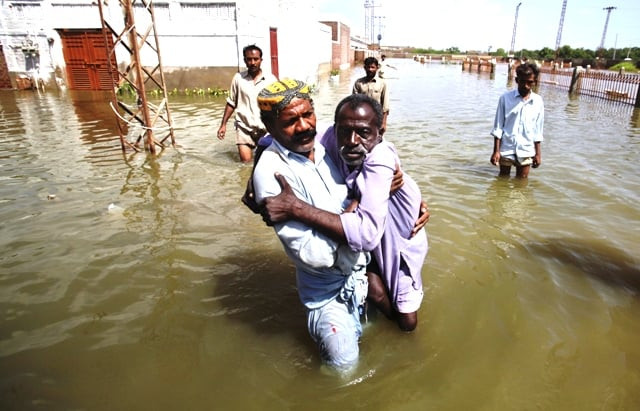
Moreover, urban planners say the government’s national climate change policy doesn’t take urban areas into consideration despite Karachi’s vulnerability to climate change.
“If you go through the national climate change policy you will fail to see the word ‘urban’ in there and this is appalling,” says Farhan Anwar from Shehri-Citizens for a Better Environment.
Anwar was speaking at a seminar and presented a report on ‘Climate Change Adaptation Strategy for Karachi – A Roadmap’. The seminar was held in collaboration with the NED University of Engineering and Technology and the chairperson of its architecture and planning department, Dr Noman Ahmed, also spoke.
According to Anwar, cities worldwide only occupy two per cent of land on earth but consume around 75% of its resources. This is why it is up to cities to adapt to climate change.
Anwar’s exhaustive report compiled over the course of five weeks isn’t all encompassing but aims to begin a conversation on the issue. The report observes that flooding is one of the most urgent issues that need to be tackled to protect Karachi from climate change.
Karachi is vulnerable to four types of flooding. The first is fluvial flooding - flooding from rivers or streams - and in Karachi’s case the Malir and Lyari rivers are focus areas. The second is surface flooding which is caused by heavy rainfall and can result in the overflow of drainage systems. Sewer flooding is another cause for concern. According to Anwar most of Karachi’s storm drains are being used as sewers and get blocked when it is time for them to kick into action. The last cause is tidal flooding which will result from a storm surge.
“Focus areas have to be identified. There is still not a single flood plain map for Karachi which can then help turn into a risk zone map,” said Anwar.
His report identifies the need to develop a process based framework for Karachi that identifies the impact of climate change and the people and assets involved. A vulnerability profile can be developed which then leads to a list of actions to “mitigate” climate change.
Experts said that Karachi’s most vulnerable communities are poor communities, and the women and children within them. Settlements along low lying areas are especially vulnerable.
The experts said that because of ‘climate migration’, even more people migrate to cities. This was witnessed in the aftermath of the 2010 floods, when scores moved from disaster-hit districts in rural Sindh to Karachi. While this stretches the city’s resources, it is these communities that will be the worst affected if a disaster strikes.
Karachi’s urban machinery cannot handle the impact of natural disasters. Shehri General Secretary Amber Alibhai says, “The police have absolutely no training for handling natural disasters. I was sitting with an officer the other day and I asked if they have a protocol for dealing with disasters. The policeman said there is a simple answer, ‘no no and no’.”
Alibhai pointed out that there is still a lot of work to be done and a city like Karachi has to reach a certain level of preparedness before it can think about future risks. “In June of 2007 storms killed over 200 people. The problem is that Karachi’s infrastructure doesn’t even have the ability to withstand the existing risks.”
Anwar believes that Karachi has to become an adaptive city. “The outcome of successful adaptation is resilience - and is a product of governments, civil society organisations, households and individuals with strong adaptive capacity.”
Published in The Express Tribune, April 25th, 2012.


















COMMENTS
Comments are moderated and generally will be posted if they are on-topic and not abusive.
For more information, please see our Comments FAQ